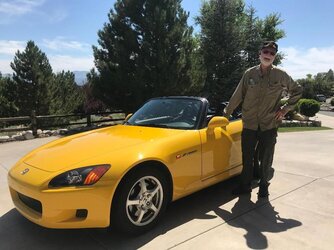So if switching from E0 to E10 is so bad, why didn't millions of car engines, that had up till then been using E0, grind to a varnished halt when the US made the change to E10 in 2005 -2007?
Prior to then, I had been using premium E0 in my self-launch glider (Stemme S10-VT), I would check for ethanol by filling a test tube to about 10% full, then top it up with the fuel. Shake, wait a few moments. If there was alcohol present the "apparent" water line would go up as the ethanol would come out of solution in the gasoline, as it has a greater affinity to water.
I got lazy and didn't check one time. The station had switched to E10 and I put a load of that in the glider. Carbs got near instantly mucked up as the ethanol attacked the 3M sloshing compound use to seal the carbon fiber fuel tanks. What a mess.
E10 (or whatever) is a screw job on the the consumer.
Prior to then, I had been using premium E0 in my self-launch glider (Stemme S10-VT), I would check for ethanol by filling a test tube to about 10% full, then top it up with the fuel. Shake, wait a few moments. If there was alcohol present the "apparent" water line would go up as the ethanol would come out of solution in the gasoline, as it has a greater affinity to water.
I got lazy and didn't check one time. The station had switched to E10 and I put a load of that in the glider. Carbs got near instantly mucked up as the ethanol attacked the 3M sloshing compound use to seal the carbon fiber fuel tanks. What a mess.
E10 (or whatever) is a screw job on the the consumer.



